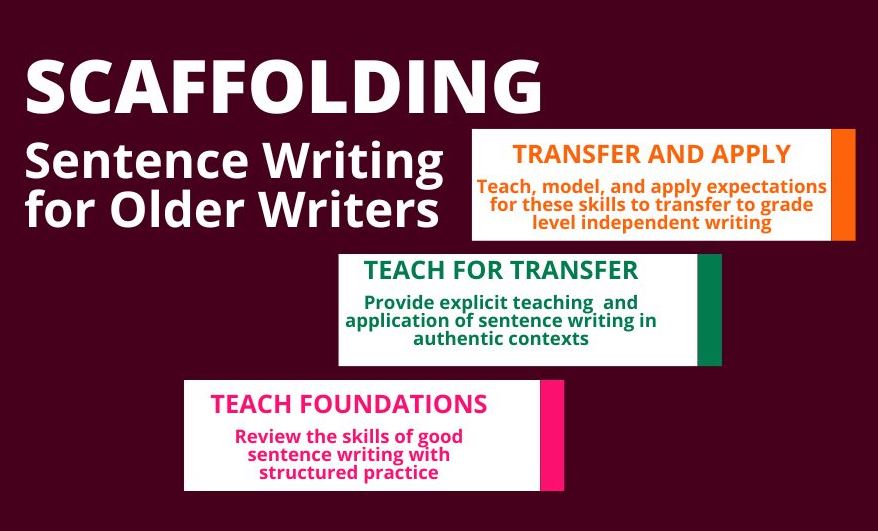Over the past two weeks, I’ve been working on unpacking priority standards with teachers in the intermediate grades alongside the instructional coaches in my district. We’ve had rich conversations around craft and conventions, but the same question has come up in every single grade level: What can we do for kids who are still struggling with basic capitalization and punctuation?
After digging deeper, I rarely hear that the kids don’t know how to do these skills. When writing dictated sentences or sitting in proximity to a teacher they are able to punctuate and capitalize with accuracy. But when working on the longer writing pieces that are expected in third grade and above, a small number of kids consistently neglect to transfer these skills to lengthier and more authentic writing.
How do we approach teaching these writers in ways that build their skills in genuine and meaningful ways? When considering different approaches, I always circle back to this question: When do writers need to write concise, short pieces in “real world” situations?
Here are three ideas you can implement right away with very little planning and a lot of creativity.
Imagine an Infographic
A fun “mini” unit of writing around infographics is a great way to not only reinforce sentence writing, but has the added benefits of engaging students in researching, using a variety of text features, and learning across content areas.
Here’s how this might go:
- Decide on the parameters of your project: Will students work as a whole class, in small groups, or independently? Will they have an open choice of a topic or a limited number of choices? Will the final product be handwritten or generated using technology tools?
- Introduce and teach the types of text features (graphs, images, etc.) students might choose to use. Use existing infographics as mentor texts (e.g., the Canva library or books like Steve Jenkins’ Animals By the Numbers: A Book of Infographics).
- Have students select their topic and engage in research.
- Draft the infographics by sketching and writing drafts on paper; writing by hand is critical for reinforcing capitalization and punctuation. Explicitly teach and reinforce the components of good sentences, including both conventions and sentence structure.
- Complete the writing process by revising and editing, then creating a finished product (paper or digital using a tool like Canva) to share with an audience.
Caption That Photo!
In our social media world full of visual images, captioning photos is a skill that’s both engaging and relevant for kids (and is one of my favorite strategies from Jennifer Serravallo’s The Writing Strategies Book).
Ask students to bring in photos from home of vacations or activities they love, provide an interesting photograph related to a science or social studies topic, or find a thought-provoking image online (What’s Going On In This Picture? from The New York Times is an amazing resource to use with kids).
Here’s how this might go:

- Select an image or invite students to bring in one of their own.
- Explicitly teach the components of good sentences, including both conventions and sentence structure, or implicitly reinforce these skills through interactive writing (see some great tips for this work in this post by Pam).
- Invite students to write one or two sentences to caption their photos independently.
- Do a quick revise/edit cycle at the end of the same writing period to catch any errors or make improvements.
Generate Graphic Novel Panels
If your students are anything like the ones I’ve worked with, they probably love graphic novels. If these books are flying off your classroom bookshelves, this might be the perfect time to invite your writers to practice their sentence-writing skills by creating their own.
Here’s how this might go:
- Provide students with a choice of graphic novel templates (there are several phenomenal resources available for kids and teachers on Jarrett Lerner’s website).
- Explicitly teach the graphic novel terms and skills your students will need (panels, text boxes, etc.). This guest post from cartoonist Gavin Aung Than provides some amazing background information about teaching writing with graphic novels.
- Have your students plan out a scene by orally rehearsing with a partner, sketching out their ideas, or jotting down an outline.
- Explicitly teach the components of good sentences, including both conventions and sentence structure, to support students’ independent drafting of dialogue and captions.
- Complete the writing process with revision and editing, adding illustrations to support the text (or vice versa).
The Critical Role of Scaffolding
When our students struggle with skills, especially basic ones such as beginning capitalization and ending punctuation, it’s easy to become frustrated and to look for answers that will move students from where they are now to where we expect them to perform quickly. While acceleration is ideal, it’s important to look for ways to scaffold the work we expect students to do by teaching strategies for the work and giving kids authentic opportunities for practice. With explicit teaching, intentional scaffolding, and fun opportunities to transfer learning, it won’t be long before we see students beginning to master the skills we hope to see!



